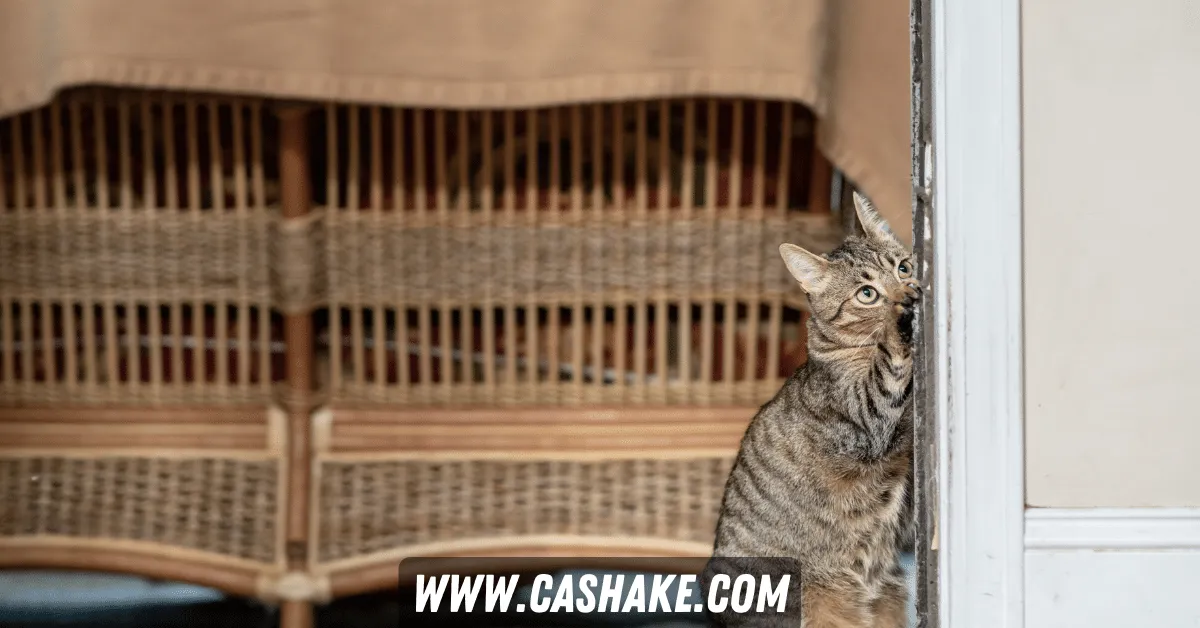Our furry little feline companions can bring immense joy into our lives, but their sharp claws can sometimes leave unwanted marks on our pristine wood surfaces. If your cat has taken a liking to scratching your wooden door frame, fret not! This comprehensive guide will provide you with expert advice and step-by-step instructions to effectively repair those unsightly scratches and restore the beauty of your woodwork.

Image: www.pinterest.com
Understanding Cat Scratches and Their Impact
Cats scratch for various reasons, including to groom their claws, mark their territory, or simply stretch their muscles. While it’s a natural behavior, it can damage the finish of wooden surfaces, especially untreated or softwoods like pine.
Recognizing the underlying cause of your cat’s scratching habits is essential. Is it solely a territorial issue, or is there an underlying medical condition or stress factor that may be driving this behavior? Addressing these root causes will not only prevent further damage to your door frame but also improve your cat’s well-being.
Repair Techniques: Step-by-Step Guide
Materials Required:
- Fine-grit sandpaper (220 or finer)
- Tack cloth
- Wood filler (optional)
- Wood stain or paint (if color restoration is needed)
- Soft brush
Instructions:
- Prepare the Scratch: Using fine-grit sandpaper, gently sand down the scratch in the direction of the wood grain. Remove any splinters or uneven edges.
- Clean the Surface: Use a tack cloth to remove any dust or residue from the sanded area.
- Fill Deep Scratches (Optional): For deeper scratches, apply a small amount of wood filler and smooth it over the scratch using a putty knife or your finger. Allow it to dry completely.
- Touch Up the Color (Optional): If the scratch affected the color of the wood, you may need to touch up the area with wood stain or paint. Apply a thin layer and blend it with the surrounding finish.
- Seal and Protect: Once the repaired area has dried, apply a clear sealer or varnish to protect the surface from further wear and tear.
Expert Tips for Prevention and Treatment
-
Provide Scratching Alternatives: Offer your cat scratching posts or pads as alternatives to your door frame. Encourage use by sprinkling catnip on these surfaces.
-
Trim Cat’s Nails Regularly: Short, well-trimmed nails reduce the severity of scratches and prevent them from penetrating deep into the wood.
-
Deter Scratches: Apply a harmless, citrus-based spray around the door frame. Cats typically dislike the smell and avoid areas where it’s present.
-
Establish Boundaries: Let your cat know that scratching the door frame is unacceptable. Use a stern voice or clap your hands when they start scratching.
-
Manage Anxiety: If scratching seems excessive or aggressive, consult a veterinarian or certified animal behaviorist. There may be underlying anxiety or stress factors triggering the behavior.

Image: cashake.com
Frequently Asked Questions (FAQs)
Q: What if the scratches are very deep or extensive?
A: For deep scratches, professional repair may be necessary. Consider consulting a carpenter or refinishing specialist.
Q: Can I use a wood stain to touch up any scratches?
A: Yes, but first test the stain on a hidden area of the door frame to ensure color compatibility.
Q: How can I prevent my cat from scratching other wooden surfaces?
A: Provide ample scratching alternatives, deter scratching with deterrents, and manage any potential anxiety triggers.
How To Fix Cat Scratches On Wood Door Frame
Conclusion
Restoring a scratched door frame from your feline friend’s enthusiastic claws is not as daunting as it seems. By following the steps outlined in this guide and incorporating our expert tips, you can effectively repair the damage and protect your woodwork from future scratches. Remember, patience and consistency are key when training your cat and maintaining the beauty of your home.
Would you like to know any other solutions to fix the cat scratches on the wood door frame? Share your thoughts in the comments below!